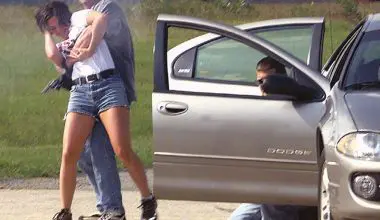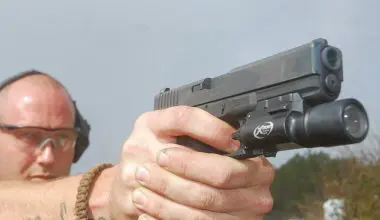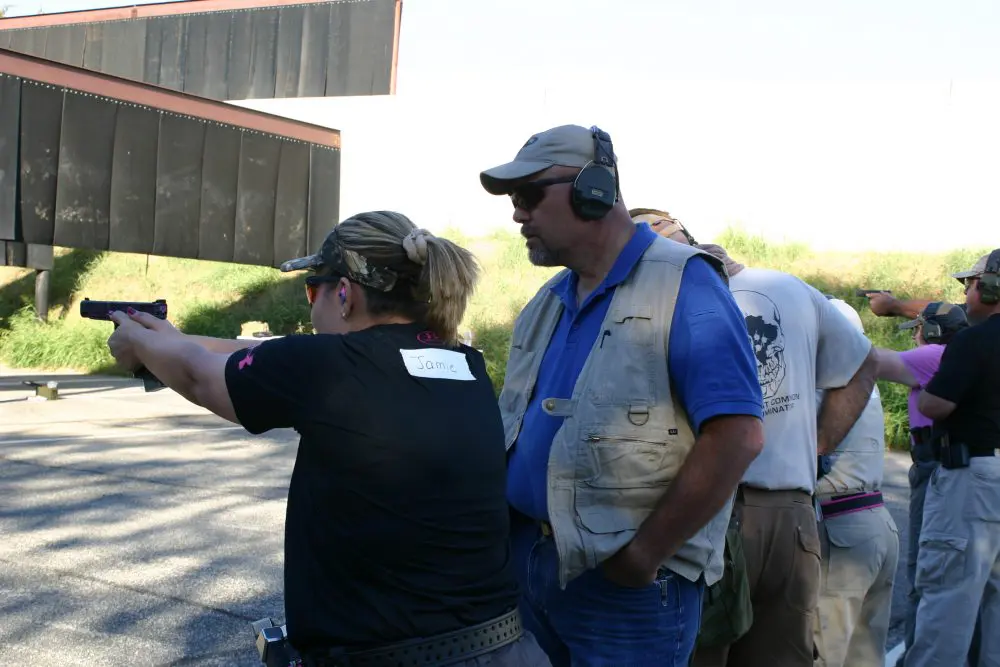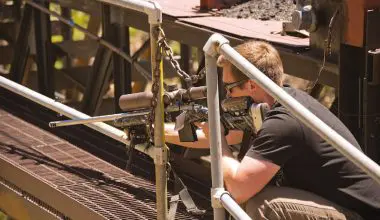In our society, when two men are introduced, they shake hands. That handshake tells a lot about the person you’re meeting and dealing with.
A firm handshake indicates confidence, which might indicate competence. A wimpy, limp-noodle handshake often means the opposite. If a working relationship is established, that handshake will seldom be used in daily meetings.
As we become familiar with those we work with, we can speed communication with them, because we no longer have to pay heed to formalities—we can get right down to business.
In business, time is money. But in the world of fighting with guns, time— speed—is life itself.
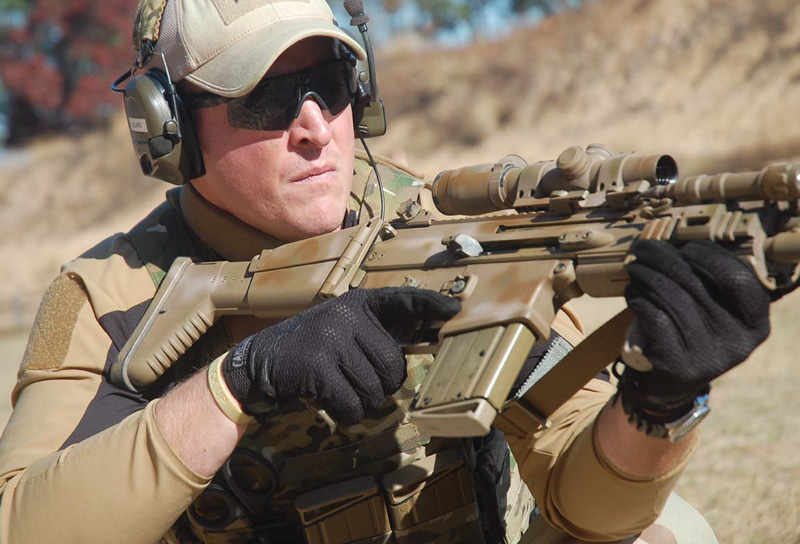
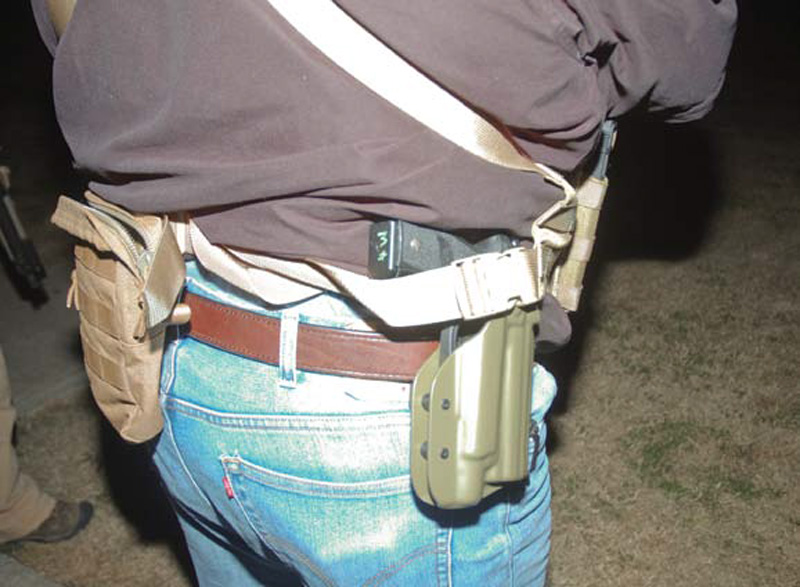
Table of Contents
THE COMBAT TRIAD
So how does this relate to us in general, and to the use of the guns we fight with in particular? Fighting with a gun requires more than just shooting, though it is sometimes difficult to convey that. Fighting with a gun is similar to a triangle, and that Combat Triad is composed of the following:
- Marksmanship: the ability to strike the target with a projectile launched from your gun.
- Mindset: the attitude that ensures you will win the fight.
- Weapons Manipulation / Tactics: Loading, reloading, malfunction clearance, etc., and application/integration of all the skill sets.
All sides of that triangle are important, but each must be mastered separately before they can be integrated.
Marksmanship isn’t difficult to learn. But marksmanship in and of itself is useless for anything except competitive shooting, where the penalty for failing to hit means you may not win a particular stage or match. But in a fight, failing to hit may mean death or serious physical injury.
There is a certain spillover between games and real gunfights—sights and trigger control, for example—but other aspects of fighting, such as follow-through, search and assessment, and ammunition management do not translate well.
Mindset cannot be taught, but it can be cultivated. Too many among us are living in denial when it comes to using violence against those who would hurt us. The majority cannot understand that there are a great many who would do them harm for a variety of reasons, or indeed no reason. They do not understand the speed at which violence occurs, and this is borne out by watching TV news reports of any incident.
When interviewed on camera, common folks will respond in one of two ways.
- “I couldn’t believe this was happening!”
- “It was just like the movies!” (or: “I thought this was a movie!”)
Absent some very few, our society now lacks the will to kill those who need killing. Political correctness and socialism have effectively limited those who have the Mean Gene in their system.
Lastly, both tactics and weapons manipulation can be taught, and manipulation can be taught in a relatively short time.
GET COMFORTABLE
Many who carry a gun are not comfortable with either the gun or its related gear. Witness that a great many who can carry a pistol daily make excuses not to, stating that they only carry “when there is a threat,” as if they were Carnac the Magnificent, able to predict when such an event would occur.
In the mid 1980s, NYPD started a pilot program to replace their revolvers with G19s. I had cops who would not carry that G19 unless they felt there was a specific reason to do so. And some who did carry them refused to carry with a round in the chamber, making that gun useless and endangering other cops with their stupidity.
They did not feel comfortable with the G19 because they were used to carrying M10 revolvers. They were comfortable with the M10 because over the years they had developed an habitual association with it.
Interestingly, when the Job made the switchover to the semi-auto pistol some five years later, none of the junior cops had that problem.
Those not comfortable with their guns/ gear will exhibit certain visual and verbal cues to those who are looking. This may include befuddlement, false bravado, or even impatience—complete with rolling eyes—the “I already know this stuff” look.
LESSON LEARNED?
A number of years ago, I worked for an organization that issued BHPs. During a Force on Force training iteration, a PITA security officer requested that he be a role player in a hostage rescue scenario, specifically as the hostage taker. He was brought to clean zone, and I loaded a Simunitions modified BHP with a magazine full of Sims ammo. I test fired it into a seat in the crisis site, engaged the mechanical safety and handed him the pistol.
I gave him strict instructions to engage the team as they entered, but as soon as he received any Simunition hits, he was to fall to the deck to avoid being well and truly lit up by the entry team. The rules for the use of Deadly Physical Force are to shoot until the threat is no longer a threat, and facing 18 very experienced shooters would mean he would absorb a metric buttload of Sims rounds if he continued to be a threat. I asked him three times if he understood and if he had any questions. He stated—arrogantly—that he knew how to shoot and what to do.
Sure….
The breach went, the team entered, and the SO raised his Browning—and nothing happened. He initially brought the pistol up and then brought it back to look at it, as 30 or so Sims rounds struck home.
Unfortunately, he had neglected to deactivate the mechanical safety. He pressed the trigger and when it failed to fire, he fell into the, “If I do nothing, nothing else will go wrong” phase, not unusual for poorly trained people.
Our hero, who was “qualified” with the BHP, was at the handshake stage with his weapon.
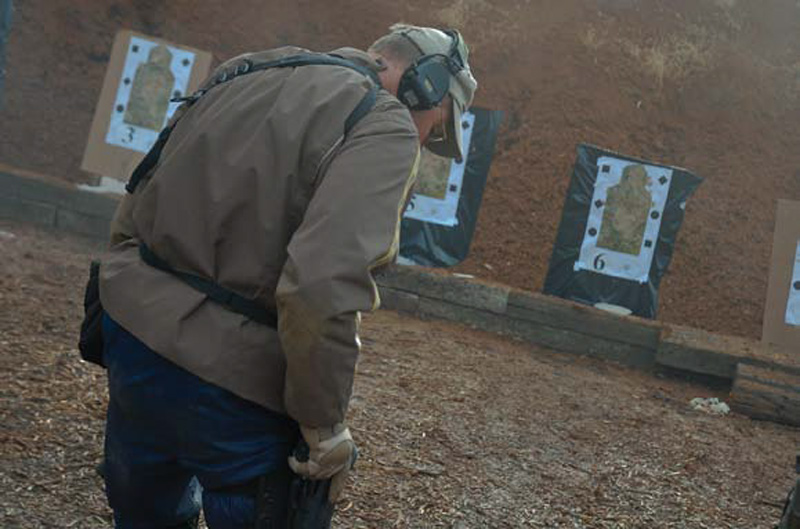
AND HE’S NOT THE ONLY ONE
This is not unusual. I see it at every carbine class when shooters—regardless of MOS, rate, job title or vocation—bring their AR up and fail to move that selector to fire. Some of these guys have been fairly experienced, but not as much as they may have believed.
I have no problems doing this, but I grew up on a 1911 and am very used to manipulating the safety/selector.
The trick here is to keep the right thumb vertical when you acquire the firing grip (with either the Man Gun or the AR). That thumb will automatically fall onto the safety/selector every time.
Pretty simple, no? Now, just repeat it, three or four thousand times. Not so simple now, is it?
We reach the level of habitual association only when we work with those weapons on a regular basis. Regular does not mean the once or twice yearly mandated qualification course, nor does it mean gazing fondly at it on the occasion of Haley’s Comet passing by Planet Earth.
It means you have to actually train with that weapon, which certainly includes live fire, but we can learn and maintain those manipulative skills during dry practice.
CAR TALK
Let me draw an analogy here. You have a motor vehicle that you drive every day. Every morning when you get into that ride, you place your key in the ignition and fasten the seatbelt without conscious effort. If it’s raining, your hand will move to the wiper controls effortlessly.
You can adjust the volume on your XM radio without changing the station.
And how can all this be accomplished? Habitual association.
The first time you entered that car, you had to orient yourself properly—adjust the seat, the rear-view and two side-view mirrors. You located the ignition lock, radio, light switch and wiper control. You found some visually and probably digitally as well. It took awhile, but soon you’d been logging enough trips in your ride that you’d reached a level close to nirvana, wherein you can make certain things happen as if by will.
Cool beans.
Now, you travel by air to a distant town and need to rent a car. You slide over to Enterprise and find a car that fits your needs. Of course, the rental ride is not likely to be the same as your own vehicle, and the controls may be in locations opposite those in your car.
If you are smart, before you pull out of that lot, you adjust everything that needs adjusting. And you visually locate those controls that you may need on your trip—light switch, wiper controls, gas cap and so forth.
However, if all you do is look at them, you will likely not be able to find them when it is raining, dark, and you’re lost.
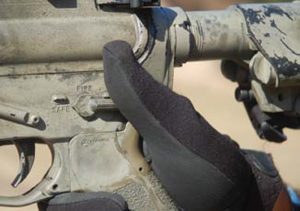
VISUAL AND TACTILE LEARNING
We learn by listening, reading, viewing, and doing. Most in this business are probably good visual learners, but with a strong tendency to tactile/kinesthetic learning. Those who are good shooters are good because their eye-hand coordination is permanently etched into their very being.
Touching those switches locks their location into our brain housing group. The more we do it, the easier it becomes.
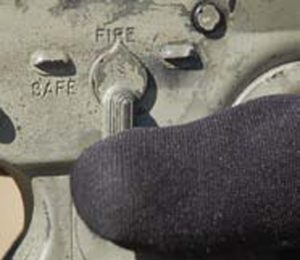
And this is how we develop habitual association. We have to perform those functions in training so that we will find them when the flag flies.
And so it is with my gun gear. When I put my armor on, I make a quick pass over my vest and touch my primary tourniquet. It is center mounted, so I use both hands. I feel for my M4 mags and then my pistol mags.
Because the holster I use when teaching is different than what I wear off duty, I spend some time during the day acquiring a firing grip (but no more than that) to further re-acquaint myself with this holster. It doesn’t take much effort, and there are no safety issues with it. During downtime, your hands need to be someplace, and rather than playing pocket pool, you might as well be doing something useful.
BEHIND THE FIRING LINE
I get to see a lot while standing behind the line. I maintain that as soon as you put a loaded gun in some folks’ hands, their IQ takes about a 20-point nose dive. Some people do things that border on the bizarre, while others function high order.
The complexity of drills will add to the problems. For example, drawing a pistol and engaging the target with a failure drill while standing on the ten-yard line is a pretty simple drill.
But, if I change it to shooting on the move with the carbine, then transitioning to the pistol, engaging the target with two rounds, speed reloading and engaging with two more rounds, it becomes a lot more difficult.
On the stationary drill, the shooter maintains visual contact with the target as he presents his pistol and engages the threat. No problem at all….
But when we add complexity, some fall apart. When transitioning to the pistol, some shooters stop. Some also—for whatever reason—look at their pistol while drawing. Many have to look down at the pistol mag pouches to find a pistol magazine, or they grab an M4 mag instead of a pistol mag. Don’t laugh. We’ve all grabbed the wrong mag at some point, especially if they’re on a shingle-type magazine pouch.
The problem with stopping to look is that we lose situational awareness, and losing that SA may mean we lose the fight.
KEEP AT IT
Maintaining habitual association is sometimes difficult. Not enough training time, lack of proper training venues, cost related to ammunition, family priorities, and the like can all interfere.
I keep an M4-type airsoft gun by my back door. Several times a day, I go on the back deck and do numerous Up Drills, firing singles or pairs at spinners in the back yard. In this manner, I can keep my hand in the game (so to speak) and maintain my proficiency during my time at home.
If you believe that you can pick up a gun—any gun—after not using it for several months (or maybe years) and function with it just like riding a bicycle, you need to relight that crack pipe and start huffing away.
Mere possession of a gun has nothing to do with using it proficiently and within the guidelines of the law.
With that possession come legal, moral and ethical responsibilities. If you are unable or unwilling to face those, perhaps you should reassess why you have that weapon in the first place.

